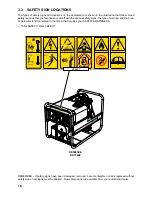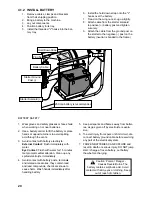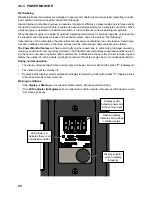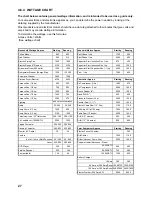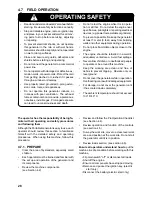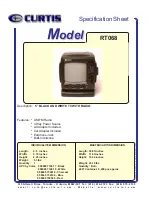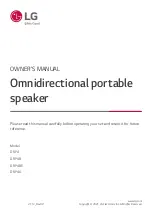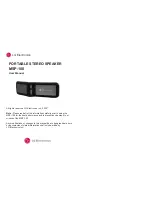
13
2.7 OPERATING SAFETY
1. Please remember it is important that you read
and heed the safety signs on the generator.
Clean or replace all safety signs if they can-
not be clearly read and understood. They are
there for your safety, as well as the safety of
others. The safe use of this machine is strictly
up to you, the operator.
2. All things with moving parts are potentially
hazardous. There is no substitute for a cau-
tious, safe-minded operator who recognizes
potential hazards and follows reasonable
safety practices. The manufacturer has
designed this generator to be used with all
its safety equipment properly attached, to
minimize the chance of accidents. Read and
understand operator's manual before starting,
to make sure you have all safety equipment
attached and operational.
3.
Close and secure all covers, guards, deflec
-
tors and shields before starting and operating.
4. Personal protection equipment including hear-
ing protection, safety glasses, safety shoes,
and gloves are recommended during assem-
bly, installation, operation, adjustment, main-
taining, repairing, removal, or moving.
5. Inspect electrical harness, and controller to
ensure they are in good condition before oper-
ating to maintain control.
6. Keep the generator dry. Operate on a dry sur-
face under an open well ventilated, covered
structure.
7. Do not run machine inside a closed building to
prevent asphyxiation from engine exhaust.
8. Do not operate near openings to any building
that can be occupied in order to help avoid the
exhaust hazard.
9. Never use alcoholic beverages or drugs which
can hinder alertness or coordination while
operating this equipment. Consult your doc-
tor about operating this machine while taking
prescription medications.
10. Never allow children or unauthorized people
to operate or be around this machine.
11. Plug appliances directly into generator or use
a heavy-duty outdoor-rated extension cord.
Make sure entire extension cord is free of cuts
or tears and the plug has all 3 prongs, espe-
cially a grounding pin.
12. If necessary to connect generator to house
wiring to power appliances, have a qualified
electrician install appropriate equipment. Or,
your utility company may be able to install an
appropriate transfer switch.
13. Keep the working area clean and free of de-
bris to prevent tripping. Operate only on level
ground.
14.
To prevent a possible fire, keep the generator
at least 3 feet (1 meter) away from building
walls and other equipment during operation.
Do not place flammable objects close to the
engine.
15. NEVER
plug the generator into a wall outlet.
This practice, known as backfeeding, can
cause an electrocution risk to utility workers
and others served by the same utility trans-
former.
2.8 TRANSPORT SAFETY
1. Comply with Provincial / state and local laws
governing safety and transporting of machin-
ery on public roads.
2. Do not exceed a safe travel speed. Slow
down for rough terrain and cornering.
3. Do not transport or move the generator with
the engine running.
4. Inspect all access panels and guards to en-
sure they are secured.
5. If the generator has been running, allow the
engine to cool for at least 15 minutes before
loading the generator on the transport vehicle.
A hot engine and exhaust system can burn
you and may ignite some materials.
6. Ensure the fuel tank cap is on tight and keep
the generator level when transporting to re-
duce the possibility of fuel leakage.
7. Move the fuel valve lever to the OFF position.
8. When using ropes or tie-down straps to
secure the generator for transportation, be
sure to only use the frame bars as attachment
points. Do not fasten ropes or straps to any
portions of the generator body.
9. Do not drink and drive.
10. Just before transport, perform a circle check
to ensure everything is safe and secure.


















